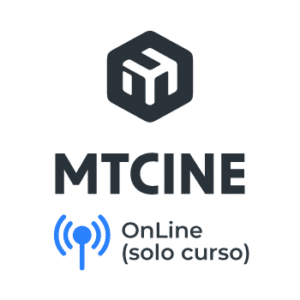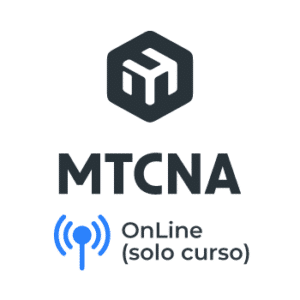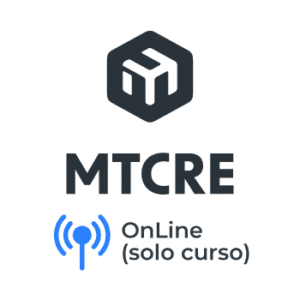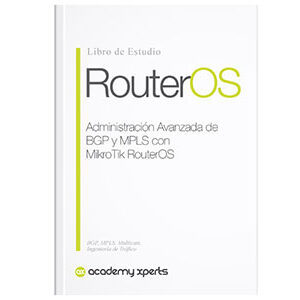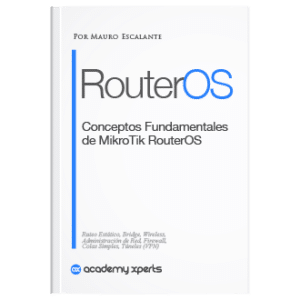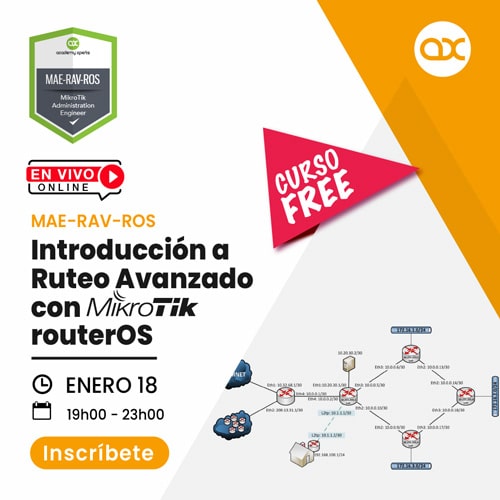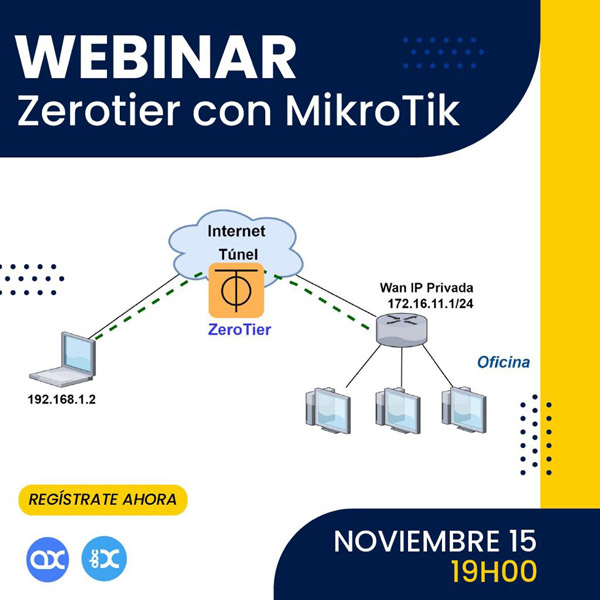In depth with Unicast: Advantages, Disadvantages and Use Cases
- Mauro Escalante
- No comments
- Share this article
Unicast traffic refers to network communication where the data flow is directed from one device to another specific device. It is the most common form of transmission on computer networks. In other words, a Unicast message is sent from a single sender to a single recipient.
At the end of the article you will find a small test that will allow you assess the knowledge acquired in this reading
Here are the key details How Unicast traffic works:
Unicast IP Addresses
Each device connected to an IP network has a unique IP address assigned. In the case of Unicast, each data packet sent over the network has a source address (the sender) and a destination address (the recipient) in its header.
Unicast routing and routing
Unicast routing ensures that the data packet is sent via the most efficient path possible from the sender to the recipient. Routers within the network use routing tables to determine the shortest or most efficient route for each data packet.
Unicast protocols
Several network communication protocols, such as Transmission Control Protocol/Internet Protocol (TCP/IP), use Unicast for data transmission. Routing protocols such as OSPF, BGP, and RIP also use Unicast for the transmission of routing packets.
Unicast Applications
Unicast is used in most day-to-day network communications, such as sending and receiving emails, browsing the Internet, transmitting files, and many other common network tasks.
Unicast network traffic
Unicast traffic can take up a considerable amount of network bandwidth, especially if a large amount of data, such as streaming video, is being transmitted between two points on the network.
Limitations of Unicast
One of the main limitations of Unicast is that it is inefficient for transmitting data to multiple recipients. Each transmission to a different recipient requires its own separate transmission, which can result in a lot of redundant traffic on the network if the same data needs to be sent to many recipients.
congestion control
In a Unicast traffic scenario, congestion control plays a crucial role. When large volumes of data are sent between the sender and receiver, there may be network congestion. Congestion refers to the overloading of a network when bandwidth demand exceeds available capacity. Congestion control is mainly performed using flow control techniques such as Window Scaling, Slow Start, Fast Retransmit, and Fast Recovery, which are characteristics of the TCP protocol.
Load balancing
Another notable feature in Unicast traffic is load balancing. Load balancing is a technique used to distribute network traffic evenly across two or more links, to maximize bandwidth utilization, minimize response times, and avoid overloading a single link. Load balancing can significantly improve efficiency and reliability in Unicast traffic.
Quality of Service (QoS)
In a Unicast network, it is essential to maintain Quality of Service (QoS). QoS refers to the ability of a network to provide better service to certain types of network traffic. This is achieved by assigning priorities to different types of traffic, which ensures that high priority traffic is delivered before lower priority traffic. For Unicast traffic, QoS can ensure that important data is delivered in a timely and efficient manner.
Security
Security is also an important aspect in Unicast traffic. Unicast communications can be protected through the use of encryption, which ensures that data cannot be read if intercepted during transmission. Additionally, additional security measures, such as authentication and firewalls, can be implemented to protect Unicast communications against intrusions and attacks.
Diagnosis and troubleshooting
In the case of Unicast traffic problems, various diagnostic tools and techniques are used. This may include using standard network diagnostic commands, such as 'ping' and 'traceroute', as well as more advanced network monitoring software. Troubleshooting Unicast traffic may involve identifying and correcting hardware or software problems, reconfiguring network parameters, or even upgrading or replacing network equipment.
It is important to note that there are other types of network traffic besides Unicast, such as Multicast y Broadcast. Multicast is when data is sent from one sender to multiple specific recipients, while Broadcast is when data is sent from one sender to all devices on a network.
Advantages of Unicast traffic
1. One to one communication:
Unicast allows efficient communication between two network nodes, being ideal for point-to-point communication applications, such as email, FTP, web browsing, etc.
2. Congestion control:
The TCP protocol, which is used for most Unicast communications, has built-in congestion control mechanisms, allowing for more reliable data transport.
3. Security:
Because communication is between a single sender and a single recipient, it is easier to implement security measures, such as encryption, to protect transmitted data.
4. Flow control:
The protocols used in Unicast communication, especially TCP, have flow control mechanisms, which help prevent the sender from sending data at a rate that the recipient cannot handle.
Disadvantages of Unicast traffic
1. Inefficient for transmission to multiple recipients:
Each Unicast transmission to a different recipient requires its own separate transmission. If the same data needs to be sent to many recipients, this can result in a large amount of redundant traffic on the network.
2. High bandwidth usage:
Because each stream requires its own connection, Unicast traffic can quickly consume available bandwidth, especially when transmitting large volumes of data, such as high-definition video.
3. Expensive in terms of network resources:
Each Unicast connection requires its own network resources, including router processing and routing table space. This can be expensive in terms of network resources required, especially on larger networks.
4. Difficulty of scale:
As mentioned before, Unicast's efficiency decreases as the number of recipients increases, which can make it difficult to scale for applications that require data to be transmitted to many recipients, such as live video streaming.
Unicast traffic is essentially the most common form of traffic on most networks and is essential for a wide range of applications and services. Here we mention some typical use cases:
Web navegation: Every time you open a web page in your browser, you are using Unicast traffic. Your device (the client) sends a request to a specific web server, and that server responds by sending the web page data to your device.
E-mail: When you send or receive email, you are also using Unicast traffic. The email is sent from one server to another, and then to the final recipient.
File transmission: Most file transmissions, such as downloading a file from an FTP server or sending a document over a network, occur over Unicast traffic.
Videoconferences: Video and audio calls, such as those made via Zoom or Skype, generally use Unicast traffic. Each participant in the call individually connects to the server, which sends and receives data to and from each participant.
Online games: Online games also use Unicast traffic. Each player connects to a game server, which coordinates the action by sending data to each player.
Video and music streaming: When you play a video on Netflix or a song on Spotify, you are using Unicast traffic. The streaming server sends the video or audio data directly to your device.
VPN and Remote Access: Virtual private networks (VPNs) and remote access to networks and servers also rely on Unicast traffic. Connections are made from one point to another, either between the user and the VPN server, or between the remote user and the server or service they are accessing.
These are just a few examples of how Unicast traffic is used in our daily network activities. It is important to note that each of these use cases has its own requirements and challenges in terms of network and traffic management.


